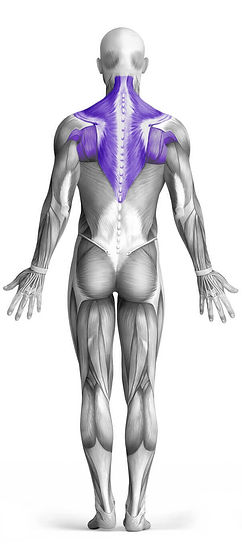Dumbbell Lying Rear Delt Row 101 Video Tutorial
0

Exercise Synopsis
Target Muscle Group
Upper Back
Execution
Isolation
Force Type
Pull
Required Equipment
Dumbbell
Fitness Level
Intermediate
Variations
None
Alternatives
Timer
Hour
Minute
Second
Stopwatch
00:00:00:00
Overview
The Dumbbell Lying Rear Delt Row is an isolation exercise that primarily targets the upper back, with secondary engagement of the traps and shoulders. This movement is performed while lying face down on an incline bench, reducing momentum and ensuring strict form. Using dumbbells, the lifter pulls the weights upward in a rowing motion, emphasizing the rear delts and upper back muscles. The exercise falls under the pull category and helps improve posture, shoulder stability, and overall upper body strength. It is particularly useful for enhancing rear delt development and creating a well-rounded shoulder appearance.
How to Perform
Position Yourself Properly
Lie face down on a flat or slightly inclined bench, ensuring your chest and stomach are fully supported. Hold a dumbbell in each hand with a neutral grip, palms facing inward.
Extend Your Arms Forward
Stretch your arms out in front of you while keeping a slight bend in your elbows. Engage your core and keep your body stable, lifting your chest slightly off the bench if needed for a better range of motion.
Initiate the Movement
Drive the dumbbells outward and slightly upward in a controlled motion, focusing on contracting your rear delts. Squeeze your shoulder blades together as you lift to maximize muscle activation.
Hold and Squeeze
At the peak of the movement, pause briefly to intensify the contraction in your upper back and shoulders. Ensure your form remains strict, avoiding momentum or excessive swinging.
Lower with Control
Gradually bring the dumbbells back to the starting position, maintaining tension in your muscles throughout the descent. Avoid letting the weights drop too quickly.
Repeat as Needed
Perform the movement for the recommended number of reps, keeping each repetition smooth and deliberate for maximum effectiveness.
★ Bonus: For exercises that involve external weights (such as dumbbells, barbells, or machines), the One Rep Max (1RM) calculator can help you estimate your maximum lifting capacity. Use it to track your strength progress and adjust your training for optimal results.
Tips
Prioritize Proper Form
Maintain strict form throughout the movement to maximize muscle engagement and minimize the risk of injury. Avoid using momentum or excessive swinging.
Progressively Increase Resistance
Gradually raise the weight over time to keep challenging your muscles and promoting continuous strength development.
Engage Your Core for Stability
Activate your core muscles to keep your body steady, preventing unnecessary movement and improving overall control.
Squeeze at the Top
Focus on bringing your shoulder blades together at the peak of the movement to fully engage the rear delts and upper back.
Control the Descent
Lower the dumbbells slowly and with control, maintaining muscle tension to enhance strength and prevent strain.
Use a Full Range of Motion
Lift the dumbbells as high as you can while maintaining proper posture, ensuring complete activation of the target muscles.
Breathe Correctly
Exhale as you lift the dumbbells and inhale as you lower them to maintain a steady rhythm and optimize performance.
Incorporate Post-Workout Stretching
Stretch your rear delts and upper back after finishing the exercise to improve flexibility and reduce stiffness.
Vary Your Grip for Versatility
Experiment with both neutral and overhand grips to engage the rear delts from slightly different angles for balanced development.
Listen to Your Body
Allow adequate rest between sessions to avoid overtraining and give your muscles time to recover and grow effectively.
How Not to Perform
Soon to be added!
Variations
Variations of fitness exercises refer to different ways of performing a specific exercise or movement to target various muscle groups, intensities, or goals. These variations aim to challenge the body differently, prevent plateaus, and cater to individuals with varying fitness levels.
Alternatives
Alternative exercises in fitness refer to different movements or activities that target similar muscle groups or serve the same training purpose as the primary exercise. These alternative exercises can be used as substitutes when the original exercise is unavailable or challenging to perform due to various reasons such as equipment limitations, injuries, or personal preferences.








